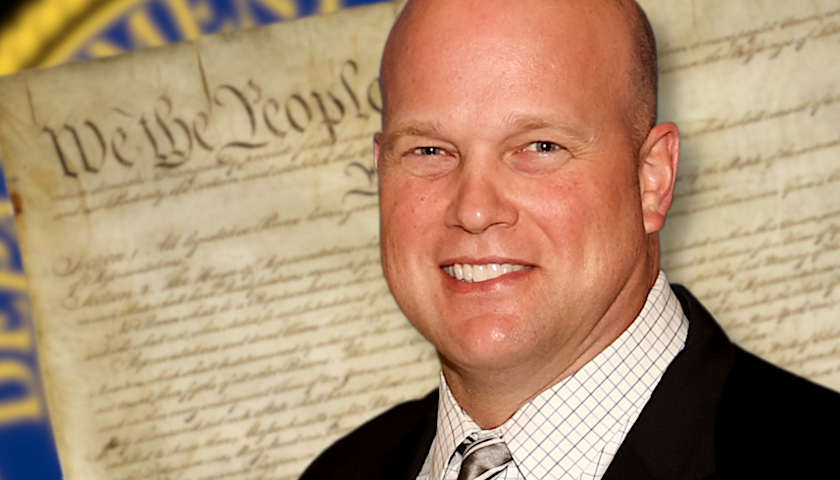In its Article II, Section 2, Clause 2, the United States Constitution provides that the President of the United States:
…by and with the Advice and Consent of the Senate, shall appoint Ambassadors, other public Ministers and Consuls, Judges of the supreme Court, and all other Officers of the United States whose Appointments are not otherwise provided for, and which shall be established by Law…”
This means that, by a simple majority vote of the 100-member U.S. Senate, the President may nominate — and the Senate may confirm — various appointees within the Executive branch and within the Judicial branch of the federal government.
In the aftermath of the November 6, 2018, general election — and the Republican Party enjoying a net gain of three seats in the U.S. Senate — President Donald Trump should experience less difficulty, during the upcoming 116th Congress (2019-2020), with how his nominees are received in the nation’s highest legislative body, than had been the case during the 115th Congress.
But not every appointment requires action by the U.S. Senate — regardless of whether that body is officially in session or is in recess between sessions. The Constitution’s Article II, Section 2, Clause 3, reads in relevant portion: “The President shall have Power to fill up all Vacancies that may happen during the Recess of the Senate…” In today’s world, with Congress being in session on a nearly year-round basis, what could truly be regarded as a “recess” has become quite unusual.
As an interesting aside, the 112th Congress (2011-2012) adopted a strategy of avoiding any Congressional “recess” during off-peak times by reconvening at three-day intervals in “pro forma” sessions so that neither chamber would be in “recess” for more than a brief few days at the very most. The Constitution’s Article I, Section 5, Clause 4, declares in pertinent part: “Neither House, during the Session of Congress, shall, without the Consent of the other, adjourn for more than three days…”
This precaution soon proved quite valuable with President Obama’s January 4, 2012, attempt to sneak three members onto the National Labor Relations Board (NLRB) — during what his administration deemed a “recess” of the Senate — thus demonstrating the wisdom of this bit of Legislative branch paranoia. In the June 26, 2014, U.S. Supreme Court decision in the case of National Labor Relations Board v. Noel Canning, the Justices ruled that because of the frequency of the “pro forma” sessions, the “recess” on January 4, 2012, was not of sufficient length to be truly characterized as a “recess” — within the meaning of Article II, Section 2, Clause 3 — and, thus, Obama’s appointments to the NLRB did indeed require Senatorial confirmation.
Separate and apart from all of that, however, two decades ago — pursuant to the Constitution’s “necessary and proper” clause — the 105th Congress (1997-1998), enacted the Federal Vacancies Reform Act of 1998 (Title 5, United States Code, Section 3345) to better facilitate the filling of vacancies which do not need Senate confirmation. The “necessary and proper” clause (Article I, Section 8, Clause 18) provides that Congress shall:
…make all Laws which shall be necessary and proper for carrying into Execution the foregoing Powers, and all other Powers vested by this Constitution in the Government of the United States, or in any Department or Officer thereof.”
Hence, Congress itself recognized, in its exercise of the “necessary and proper” clause, that Senate confirmation is not always a necessity for a Presidential appointee to assume a position of authority in the federal government.
Upon the November 7, 2018, resignation of Jeff Sessions as the nation’s 84th Attorney General, President Trump chose Matthew Whitaker as the country’s Acting Attorney General.
Whitaker is certainly not the first “Acting Attorney General” in the nation’s history.
During the administration of the late President Richard Nixon, the late Robert Bork, from October 20, 1973, to January 4, 1974, served as the country’s “Acting Attorney General”. Former President Jimmy Carter named Dick Thornburgh as “Acting Attorney General” for a brief period from January 20, 1977, to January 26, 1977. Former President Bill Clinton designated Stuart M. Gerson as “Acting Attorney General” from January 20, 1993, to March 12, 1993. Former President George W. Bush tapped Peter Keisler as “Acting Attorney General” from September 18, 2007, to November 9, 2007. And former President Obama appointed Mark Filip as “Acting Attorney General” from January 20, 2009, to February 3, 2009.
Does the Constitution require a temporarily “Acting Attorney General” to undergo the Senatorial confirmation process that is outlined above?
The short answer is “no”.
With Congressional adoption of the aforementioned Federal Vacancies Reform Act (signed into law by President Clinton on October 21, 1998) the statute designates three classes of people who may serve as temporarily “acting” officials without confirmation by the Senate:
By default, “the first assistant to the office” becomes the acting officer.
The President may, though, direct that a person currently serving in a different Senate-confirmed position serve as acting officer.
The President could also select a senior “officer or employee” of the same executive agency who is equivalent to a “GS-15” (or above) on the federal pay scale, if that employee served in that agency for at least 90 days during the year preceding the vacancy.
Executive branch departments and agencies are required by the 1998 law to report to Congress and the Government Accountability Office (GAO) information about the temporary filling of vacant executive agency positions that indeed do require presidential appointment with Senate confirmation.
The 20-year-old statute mandates that the Comptroller General report to specified Congressional committees, the President, and the Office of Personnel Management if an acting officer is determined to be serving longer than the 210 days established by the law (including applicable exceptions).
As another interesting aside, one of the additional requirements of the two-decades-old statute is to mandate that federal departments and agencies create lines-of-succession plans in case of disaster or emergency. Though this law was enacted in 1998, many agencies did not fully comply with that requirement until after the September 11, 2001, terrorist attacks.
President George W. Bush signed executive orders designating lines of succession in seven key departments within months after that 2001 attack. These succession plans are not associated with the presidential succession plan already in place.
So, bottom line, Matthew Whitaker indeed may serve President Trump as “Acting Attorney General” for a number of months — without the Constitutionally-described “Advice and Consent” of the Senate.
– – –
With his decade of work (1982-1992) to gain the 27th Amendment’s incorporation into the U.S. Constitution, Gregory Watson of Texas is an internationally-recognized authority on the process by which the federal Constitution is amended.





